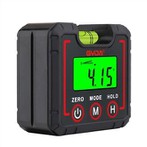Structural composition of acidity meter (pH meter)
The structure of pH meter and acidimeter consists of three main parts. Everyone in the industry knows that pH acidity meter is a commonly used instrument. With the rapid development of the economy, the application scope and technology are constantly expanding and updating. Various pH meters and pH acidity meter products are used for precise measurement. The pH value of liquid medium, including industrial processing, measurement in the food industry, etc. The pH meter equipped with the corresponding ion selective electrode can also measure the ion electrode potential MV value. Potential measurement with a pH meter is the most precise method of measuring pH and is widely used in industry, agriculture, scientific research, environmental protection and other fields. For users who are using pH meters for the first time, let’s take a look at the three main structural components of a pH meter. A pH meter consists of three parts:
1. A reference electrode;
2. A glass electrode whose potential depends on the pH of the surrounding solution;
3. An ammeter that can measure small potential differences in a circuit with extremely high resistance.
The following is a description of the main functions of each component:
1. The basic function of the reference electrode is to maintain a constant potential as a control for measuring various deviation potentials. Silver-silver oxide electrode is currently the most commonly used reference electrode in pH.
2. The function of the glass electrode is to establish a potential difference that responds to changes in the hydrogen ion activity of the measured solution. Putting the pH-sensitive electrode and the reference electrode in the same solution forms a primary cell. The potential of the cell is the algebraic sum of the potentials of the glass electrode and the reference electrode. E battery = E reference + E glass. If the temperature is constant, the potential of this battery changes with the pH of the solution to be measured. It is difficult to measure the potential generated by the battery in the pH meter because the electromotive force is very small and the circuit The impedance is very large, 1-100MΩ; therefore, the signal must be amplified enough to drive a standard millivoltmeter or milliammeter.
3. The function of the ammeter is to amplify the potential of the original battery several times. The amplified signal is displayed through the ammeter. The degree of deflection of the ammeter pointer indicates the strength of the signal it drives. For use needs, the dial of the pH ammeter is engraved with The corresponding pH value; and the digital pH meter directly displays the pH value in numbers.






